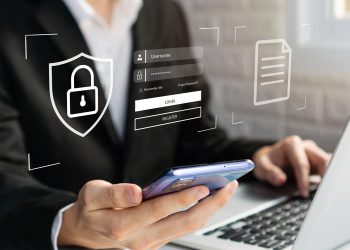The Internet of Things (IoT) is a network of physically connected appliances, cars, and other objects that have sensors, software, and network connectivity built into them. It enables various devices to gather and exchange data, which enables communication and interaction between them.
We can have smart homes with the Internet of Things where we can remotely control and monitor appliances, lighting, security systems, and more with our smartphones. By enabling autonomous farming equipment, enhancing manufacturing procedures, and improving inventory management, IoT is also revolutionizing several industries.
IoT is transforming many facets of our daily lives by enhancing the productivity, intelligence, and interconnectedness of our homes, communities, businesses, and even the military.
The Internet of Things (IoT) refers to the amalgamation of networks associated with physical objects and particulars that are entrenched with sensors, instruments, soft wares, and other technologies for the persistence of linking and exchanging data with other devices and systems over the Internet. The Internet of Things epitomizes cosmic networking of circulation of information over internet applications.
Things, characteristics, information, and facts have progressed due to the influence of numerous technologies.
Real-time analytics, machine learning, universal computing, product sensors, and computer operators have surpassed the outdated fields of embedded systems, wireless sensor networks, control systems, home automation, and building automation.
The Internet of Things (IoT) comprises web-oriented smart devices that use inserted systems, such as processors, sensors, and communication hardware, to accumulate and, act on data.
IoT devices segment the sensor data they bring together by linking to an IoT gateway or other edge device where data is either sent to the cloud to be examined or analyzed. The devices and processors interconnect with other and correlated devices and act on the information they get from one another.
The devices do most of the work without human intervention but people can interact with the devices. The Internet of Things is an unprecedented conglomeration of a zillion of physical devices around the globe that are now connected to the Internet collecting, processing, and sharing data and statistics.
The widespread set of applications for IoT devices is distributed into consumer, commercial, industrial, and infrastructure spaces.
Internet of Things system is well-ordered by event-driven smart applications that take the data and information as input from the internet and thorough knowledge of one or more actuators like smart locks, smart power outlets, and door controls towards providing different forms of automation.
The Internet of Things (IoT) requires fundamental security objectives of data confidentiality, data integrity, non-repudiation, and, data availability for the authentication, transmission, storage, and availability of data.
There are several serious concerns about dangers in the growth of the IoT, especially in the areas of privacy and security, and consequently, industry and governmental moves to address these concerns have begun including the development of international standards.
Example of Internet of Things (IoT)
- Appliances that are online
- Smart security systems for homes
- Automated farming machinery
- Mobile health devices
- Modern factory machinery
- Trackers for wireless inventory
- Incredibly fast wireless internet
- Cybersecurity biometric scanners
- Applications in medicine and healthcare
- Changing speed limits displayed digitally
- Home and building automation systems
- Infrastructure-related software
- Large-scale deployments in the city
- Systematic control of energy
- Equipment that monitors the environment
- Living laboratory experiments
- Applications in the military
The aim behind the scheduling of the Internet of Things (IoT) is to have devices that self-report in actual, progress effectiveness, and take along imperative information and statistics more quickly than a system depending on human involvement and intelligence.
The most significant characteristics of the Internet of Things (IoT) one can consider are connectivity, Sensing, Active Engagements, Dynamic Nature, Artificial Intelligence, Dynamism, and Protection.

















